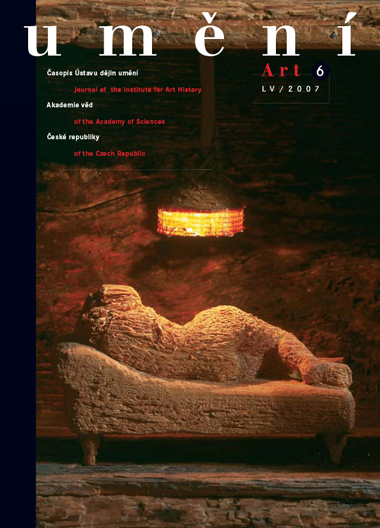Ludmila Kvapilová
Eine Pieta im Germanischen Nationalmuseum Nürnberg im Spannungsfeld von Import und einheimischer Produktion
There is a wooden Pieta at the Germanisches Nationalmuseum in Nuremberg labelled 'Salzburg, circa 1390'. This is how Heinz Stafski characterised it in the museum catalogue of 1956. In the museum yearbook of 1941 it was described with the words 'Prague, circa 1400' and at an exhibition titled 'Kunst und Kultur in Böhmen, Mähren und Schlesien'as '(Southern) Bohemia'. This article aims to reassess these controversial arthistorical determinations regarding the work in question. Whereas we find no direct analogues either in Bohemia or in the Salzburg region for the Nuremberg Pieta, two wooden Pietas closely akin to the Nuremberg sculpture in style and motif have survived in the Mittelfranken region: one Pieta in the All Saints Church in Allersberg and another in the St George parish church in Dinkelsbühl. The monumental Allersberg Pieta (circa 1400-1410) foreshadows the expressive insistence and the effort to approach the real developments that followed the Beautiful style. By contrast, the composition, a square outline and the body of Christ in horizontal position, alludes to Bohemian-style horizontal Pietas. It is not impossible that the sculptor already knew this work, which was thirty years older, or had perhaps studied Pietas imported into Bavaria from Bohemia. Despite the differences in composition, the Allersberg and Nuremberg Pietas share such similarities which suggest the possibility of common origins in a single workshop. The Dinkelsbühl Pieta closely resembles the sculptures at the Allersberg and Nuremberg museums in the physiognomy of Mary's face and hair. The arthistorical assessment that the sculpture at the Museum is from 'Salzburg' or 'Prague' thus appears to be unsuitable. It seems instead that the Pieta may be considered a domestic product from a Franconian workshop working within the framework of the International style and under the influence of the contact between the two Central European artistic centres of Prague and Nuremberg.
Full-text in the Digital Library of the Czech Academy of Sciences:
https://kramerius.lib.cas.cz/uuid/uuid:4caf266c-47e7-49f7-b979-04bc2fef2a38
< back

